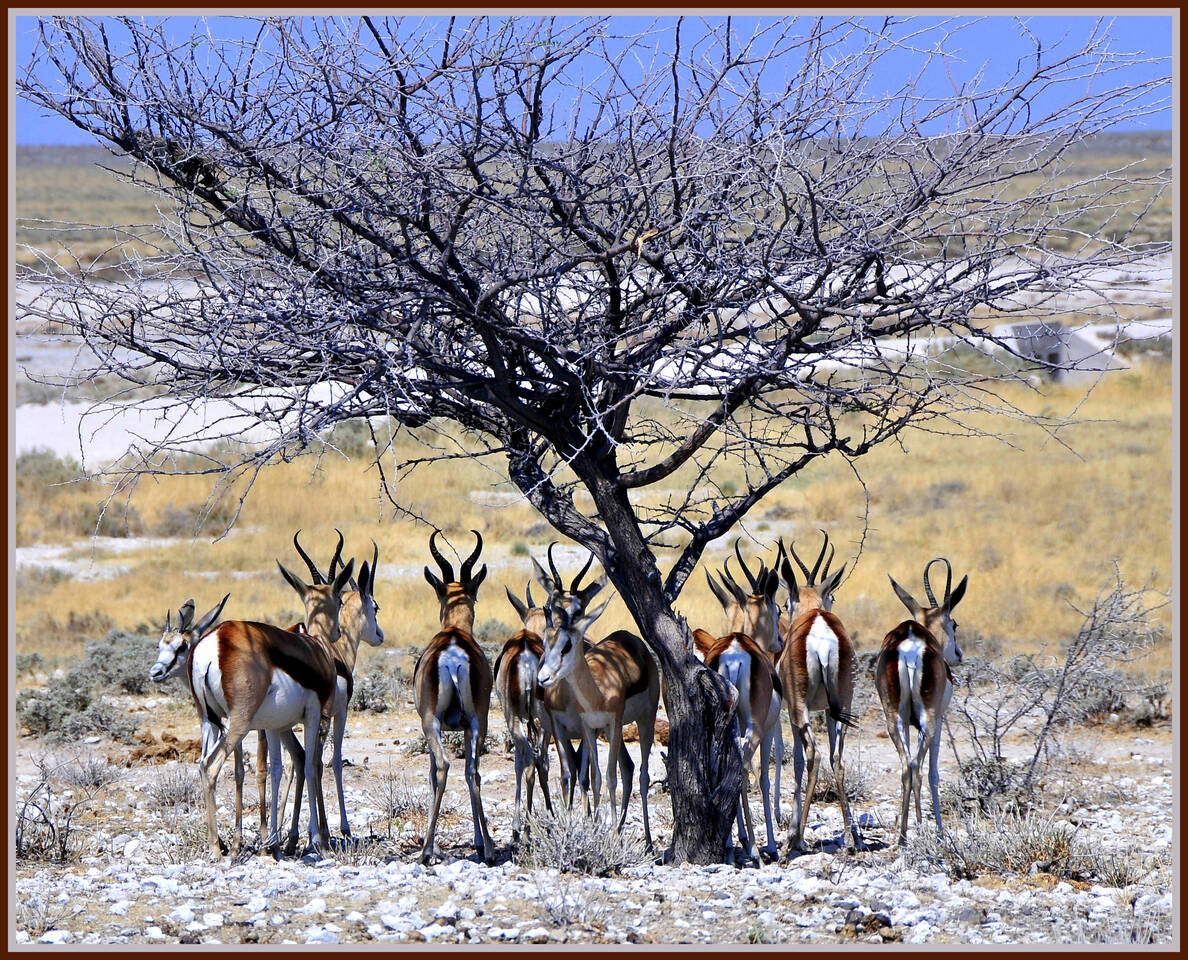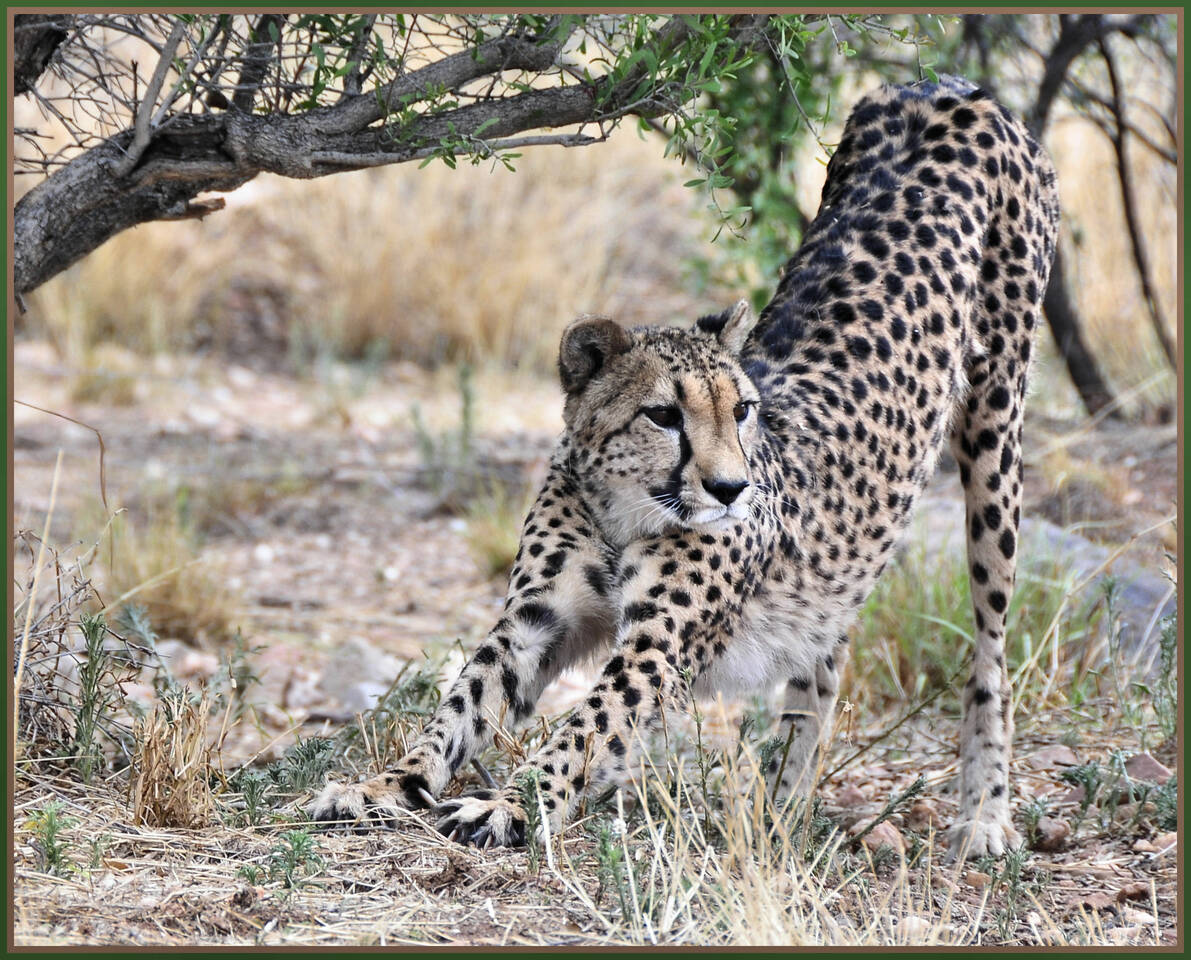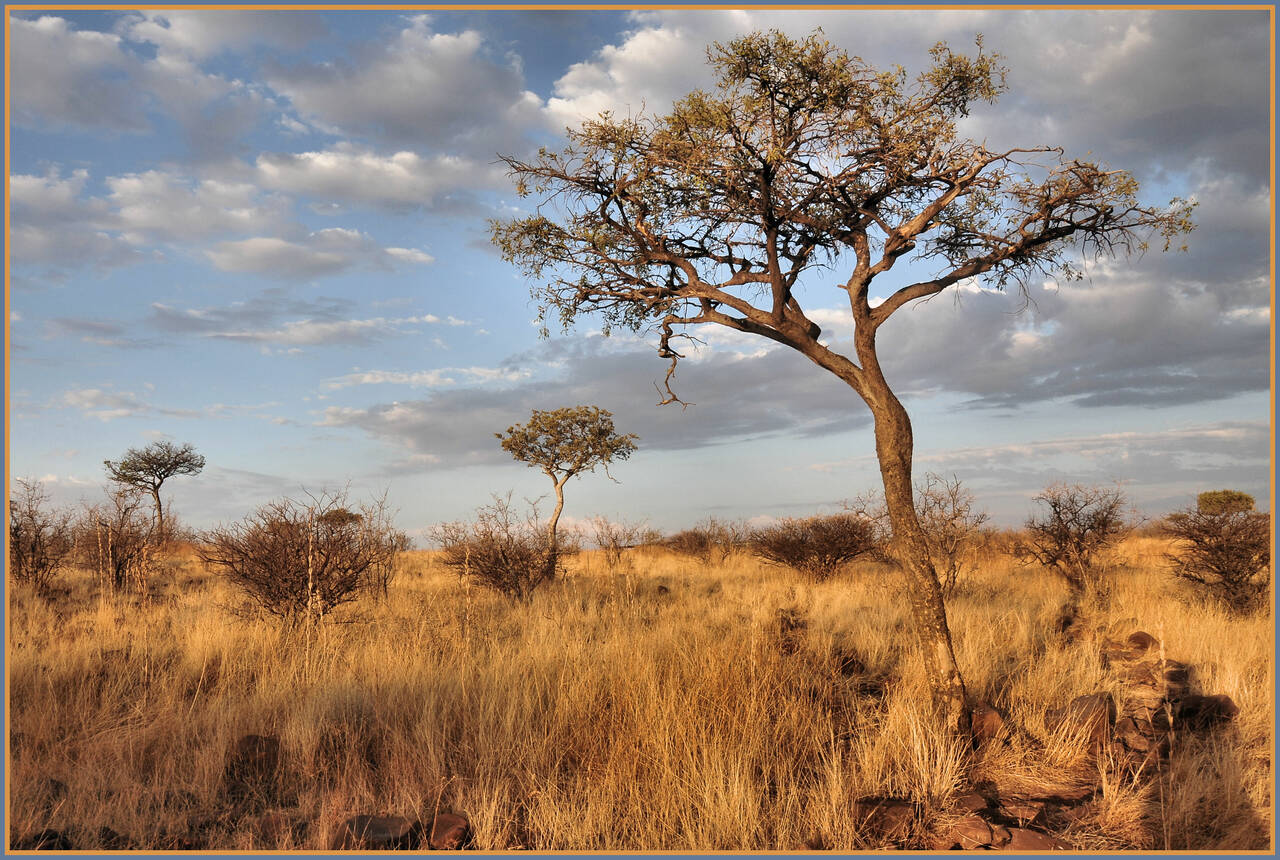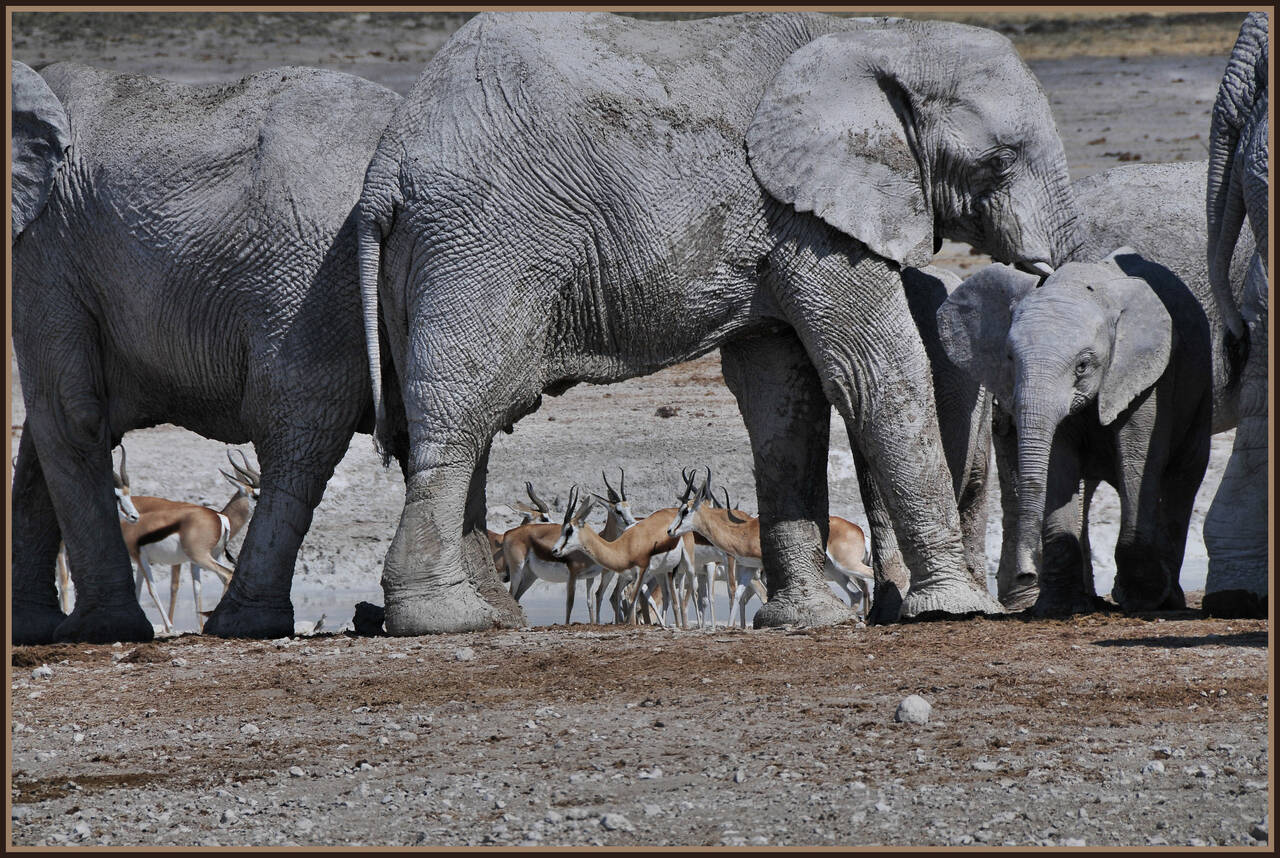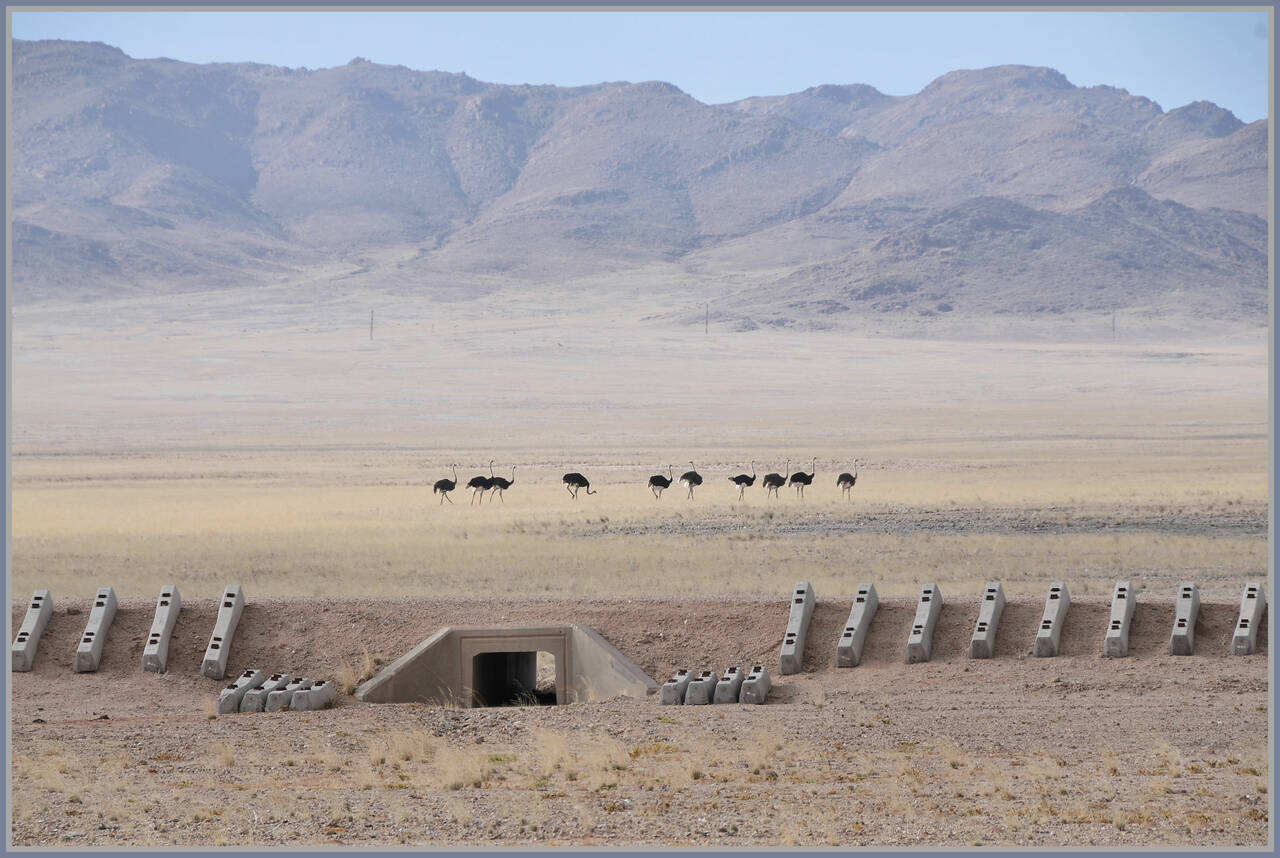Available to Club Members Only.
An abundance of scenic, wildlife and cultural attractions are included in Namibia, Botswana and Victoria Falls. In the Namib Desert, walk the highest sand dunes of the world. View the flamingos in Walvis Bay and enjoy game drives in Etosha NP. Marvel at the wonders of Okavango Delta and Chobe NP. Finish with unforgettable Victoria Falls. A comfortable, fully serviced camping safari.
This trip can be done as a lodge-bsed option.
Trip Code: NVA
2024 Departures:
May 17 - 30
Jun. 1 - 24
Jul. 20 - Aug. 2
Aug. 17 - 30
Sep. 14 - 27
Oct. 18 - 31
Nov. 2 - 15
Itinerary
Day 1. Join Windhoek
On arrival this afternoon in Windhoek, you have free time to explore the capital city of Namibia. Overnight Hotel Safari (or similar accommodation).
Day 2 - 3. Sossusvlei and Sesriem (B,D)
370 km – 90 km on tarmac & 280 km gravel / 5 hr drive
We will be met at 10:00hrs in the reception area of the hotel for our transfer to Sesriem. Note that this transfer is operated by a local Namibian transfer service and is unescorted. Our journey takes us south through ever changing scenery to our campsite located on the edge of the Namib Desert, considered by many geologists to be one of the world's oldest deserts. The following morning is an early departure driving 70 kms (1 hr one-way), stopping in the dune belt to witness the changing colours of the world’s highest sand dunes. We undertake a 5km walk to Sossusvlei and Deadvlei. The name "Sossusvlei" is of mixed origin, and roughly means "dead end marsh". Sossusvlei owes this name to the fact that it is a drainage basin without outflows for the ephemeral Tsauchab River. The pan holds rainwater to form a lake and due to the high clay content of the ground, water is retained for long periods of time. Deadvlei is another clay pan, about 2 km from Sossusvlei. A notable feature of Deadvlei is that it used to be an oasis with several acacia trees. The pan is thus punctuated by blackened, dead acacia trees, in vivid contrast to the shiny white of the salty floor of the pan and the intense orange of the dunes. This creates a particularly fascinating and surrealistic landscape, that appears in uncountable pictures and that has been used as a setting for films and videos. In the afternoon we enjoy a short hike through the Sesriem Canyon, which is a natural canyon carved by the Tsauchab river in the local sedimentary rock, about a kilometre long and up to 30 metres deep. A portion of the canyon permanently contains water, which many animals use.
Day 4 Swakopmund (B)
380 km / 6 hr drive
Today we travel through the Kuiseb canyon, site of the famous book by Henno Martin, The Sheltering Desert before we stop off at Walvis Bay to view the flamingos (seasonal). The Walvis Bay wetlands - the lagoon, mudflats, shoreline and salt works - constitute the single most important coastal wetland in southern Africa for migratory birds. The wetland therefore serves mainly as a dry-season and drought refuge for migrating species like the Greater and Lesser Flamingos, Plover, Grebe and African Black Oystercatcher. We arrive in Swakopmund, a quaint beach town with a strong German influence and with a sizable part of its population still German-speaking today. Founded in 1892 as the main harbour for German South-West Africa, Swakopmund is German for "Mouth of the Swakop" as it is at the mouth of the Swakop River. We spend the afternoon and following day exploring this German colonial town or enjoying one of the numerous optional excursions (at own risk and own expense). Overnight in a local guesthouse.
Day 5 Spitzkoppe (B,D)
150 km – 125 on tarmac & 25 gravel / 2 hr drive
Leaving Swakopmund after lunch we set up camp among the boulders of the Spitzkoppe Mountains. The afternoon is free to explore the stunning surrounding area on foot. Northeast of Swakopmund is the stark grandeur of The Spitzkoppe (sharp head), one of Namibia's most recognizable landmarks. The summit of this imposing granite rock formation (1,728m) was first scaled only in 1946, and its shape has inspired its nickname, The Matterhorn of Africa. The spectacular setting of our remote bushcamp is sure to leave a lasting impression.
Day 6 – 7 Etosha National Park (B,D)
530 km / 9 hr drive
We enter Etosha via the Western corridor and travel through the park to Okakeujo Restcamp. The Park was first established in 1907, when Namibia was a German colony known as South West Africa. At the time, the park's original 100,000 km² made it the largest game reserve in the world. Due to political changes since its original establishment, the park is now slightly less than a quarter of its original area, but still remains a very large and significant area in which wildlife is protected. This Park is one of the most important reserves and game sanctuaries in Africa with thousands of wild animals such as blue wildebeest, springbok, zebra, kudu, giraffe, cheetah, leopard, lion and elephant making this area their home. Floodlit waterholes at Okakeujo & Namutoni Restcamps attract an abundance of animals throughout the evening, providing us with many amazing wildlife sightings. We enjoy early morning and late afternoon game drives (approx 150 kms drive/12 hrs including lunch). Overnight Okakeujo & Namutoni Restcamps inside Etosha.
Day 8 Kavango river to Rundu (B,D)
420 km / 6 hr drive
After a morning game drive we exit Etosha and travel to Rundu on the banks of the Kavango River. Our camp is set amongst the lush vegetation overlooking the Kavango River.
Day 9 – 10 Okavango Delta (B,D)
300 km / 5 hr drive
Continuing into the Caprivi we cross into Botswana and travel by road to our campsite on the edge of the Okavango Delta. The following day we do mokoro and boat excursions in the back channels of the Nxamasire area of the Delta. Game walks are also done on the smaller islands in the area subject to water levels of the delta.
Day 11 - 12 Chobe River (B,D)
300 km / 5 hr drive
Continuing through the Caprivi we cross into Botswana and travel through the Chobe National Park setting up camp on the banks of the Chobe River. Chobe is famous for its beautiful scenery, magnificent sunsets and abundance of wildlife and birdlife. The following day we relax on a game viewing cruise on the Chobe River. A morning game drive in Chobe National Park included on Day 12.
Day 13 Victoria Falls (B)
90 km / 3 hr drive
We travel across the Zimbabwean border to Victoria Falls, without doubt one of the greatest and most spectacular sights in Africa. Mosi-oa-Tunya National Park (otherwise known as Victoria Falls) is a UNESCO world heritage site. The Park covers 66 km2 from the Songwe Gorge below the falls in a northwest arc along about 20 km of the Zambian riverbank. Two countries - Zambia and Zimbabwe, share the magnificent falls. Nothing can compare to viewing the awesome power of 'The Smoke that thunders" for the first time. There will be plenty of opportunity to view the Falls 'up close and personal' by traversing the many walkways in and around the rain forest that surrounds the many view points (entrance fee own account). In the wet season, be sure to wear a raincoat as the spray can give you a thorough drenching! Victoria Falls is also the "adventure capital" of Southern Africa and there are many optional activities on offer to whet your appetite. These range from game drives in the nearby national park, scenic micro light or helicopter flights, or for the more adventurous white water rafting or bungi jumping. Victoria Falls also has many markets where you can browse for African curios. All lunches, dinners and optional activities will be at your own expense. Overnight Sprayview Lodge (or similar).
Day 14 Victoria Falls (B)
Our trip concludes after breakfast.
Optional pre and post tour nights can be added in Windhoek and Victoria Fall.
Trip might be done in reverse
Tour cost: $ 3,860 CAD / $ 2,900 USD per person
Single Supplement for private tent/room: $ 400 CAD / $ 315 USD
Add $ 100 for departures frrom Aug. 2024
Upgrade to lodges instead of camping: $ 1,509 CAD / $ 1,175 USD
what’s included
10 nights camping, 2 nights hotel, 1 night guesthouse
13 breakfasts, 1 lunch, 10 dinners
All camping gear (including sleeping bag & pillow) spacious 2 person safari tents, Camp bed and comfortable safari folding chair
English speaking local guide
Group camping equipment, reference library and first aid box
Nature walks and game drives as per itinerary
Private transport in custom built safari vehicle
Boat cruise on Chobe River National park and site entrance fees per itinerary
Arrival and departure transfers are included in Windhoek and Victoria Falls on Days 1 & 14. (NB ‑ Victoria Falls Airport Zimbabwe (VFA) only; and NOT Livingstone Airport Zambia).
what’s not included
International flights
Entrance into Victoria Falls National Park
Optional activities
Meals not specified in the itinerary
Bottled water, aerated and alcoholic drinks
Items of a personal nature such as phone calls, laundry, etc.
Tips
Airport and departure taxes
Visas
Travel Insurance Arrival and departure transfers to/from Livingstone Airport (LVI) Zambia, or on any other day other than Days 1 & 14, are NOT included
Local payment of 2500 South African Rand payable to tour leader on day 1

